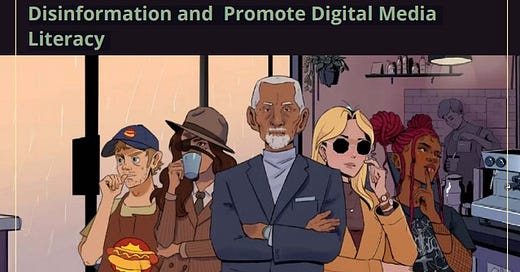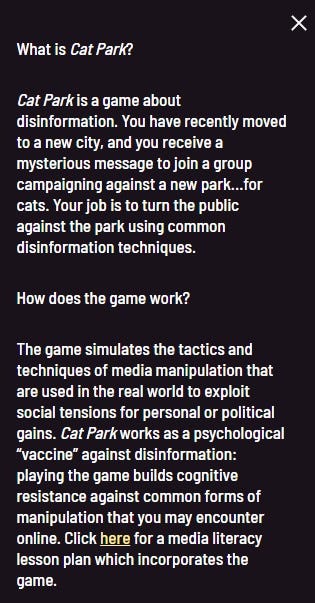Disinformation, Misinformation and gaslighting
The online world is full of interesting tidbits like "innoculation science."
Disinformation, misinformation, and gaslighting. How does one suss out the real fact from the “approved” information disseminated by media outlets or outright gaslighting by advocacy groups?
It’s a tough call sometimes but checking the original source, be it a bill, a letter, a video or another medium is the place to start.



The proliferation of media “fact-checking” hasn’t necessarily made it easier for the average person to figure out what is true and what is false.
Making matters worse, the Twitter Files unleashed by Elon Musk and several independent journalists have revealed sectors of the U.S. government had been actively suppressing certain viewpoints online with a focus on information dealing with COVID-19.
In the last year and a half, most information on COVID-19 which was tamped down on or labeled conspiracy theories or misinformation has turned out to be more true than not.
From Ivermectin being a horse dewormer instead of a valid course of treatment to a large-scale study showing masks are infective and a host of other topics are all now seemingly being proven correct.
The CDC and health officials around the world got a lot of things wrong, from asymptomatic spread to fatality rates, the effectiveness of lockdowns, school closures, business closures, social distancing, outdoor spread vectors, and hospital capacity.
More recently, as with masking, at least 65 studies are now showing natural immunity is better than vaccination for severe disease - the opposite of what the public has been told for three years and still continues to be told by the CDC’s Director Rachelle Walensky. This round of studies also speaks to the vaccine efficacy narratives which went from telling the public in 2020-21 they are 100 percent protected and they cannot transmit the virus if they are vaccinated down to less than 24 percent effective in 2022 depending on the variant one is exposed to.
Then there are vaccine injuries, the fact checks (or rather debunking attempts) around the data in the VAERS reporting system for those injuries. The average person, at this point, has to question the past reporting given the flow of headlines announcing young, healthy persons suddenly dropping dead or having heart attacks.
Last year, the Biden administration’s Department of Homeland Security attempted to roll out a “Disinformation Governance Board.” While short-lived, the board was supposed to be headed up by a woman named Nina Jankowicz. She quickly came under fire for her own conspiracy theory-laden tweets as well as attempts to portray parents protesting school boards over Critical Race Theory as disinformation nuts.
We’ll come back to Jankowicz and the COVID-19 information issues shortly. First, take a moment to go read an article on a game called “Cat Park” published by The Foundation For Freedom Online (FFFO) last fall.
FFFO’s article synopsis points include:
The US gov't produced a cat-themed “disinformation” video game to “inoculate” young people against populist news content.
The game aspires to create a “psychological vaccination against fake news” in those surfing social media.
The US and UK gov'ts plan to embed the game in local schools and educational curricula around the world, especially “ahead of elections.”
For a point of reference going forward, the U.S. government entity involved in all of this is the State Department's Global Engagement Center (GEC).
The synopsis is pretty on point, but this game is live online and anyone can access it. I played it. View the screenshots from my gameplay on Document Cloud.
My initial impression was that 99 percent of kids ages 15 and up that they are targeting with this game will be underwhelmed and likely mock the heck out of it - and, ironically, probably with memes.
In a nutshell, this is an online version of a Skinner box.
Here’s part of what the game’s “about” section says:
As the description says, the game targets a newcomer to a city, who is channeled through a series of “influencers” to create memes and alter photos to meet a narrative about rejecting a proposed cat park in a city area.
Note the description mentions a “media literacy lesson plan.” This is exactly what it sounds like. I looked around online, but it did not seem like anyone was linking to it. There were no connections to schools using it in the United States that I could find.
The player gets points for performing the tasks, just like a mouse in a Skinner box. The tasks are morally questionable, requiring lying and preying on people’s emotions, and are transparently activist in nature.
There is no free will in the game, you go along with what the influencer wants you to do. Period.
In the end, the player is shamed by the final influencer, a private investigator who knows the “truth” about the attacks on the cat park idea.
There is no “winning” the game, instead, the player receives a final influence score.
Keep reading with a 7-day free trial
Subscribe to More to the Story by A.P. Dillon to keep reading this post and get 7 days of free access to the full post archives.





